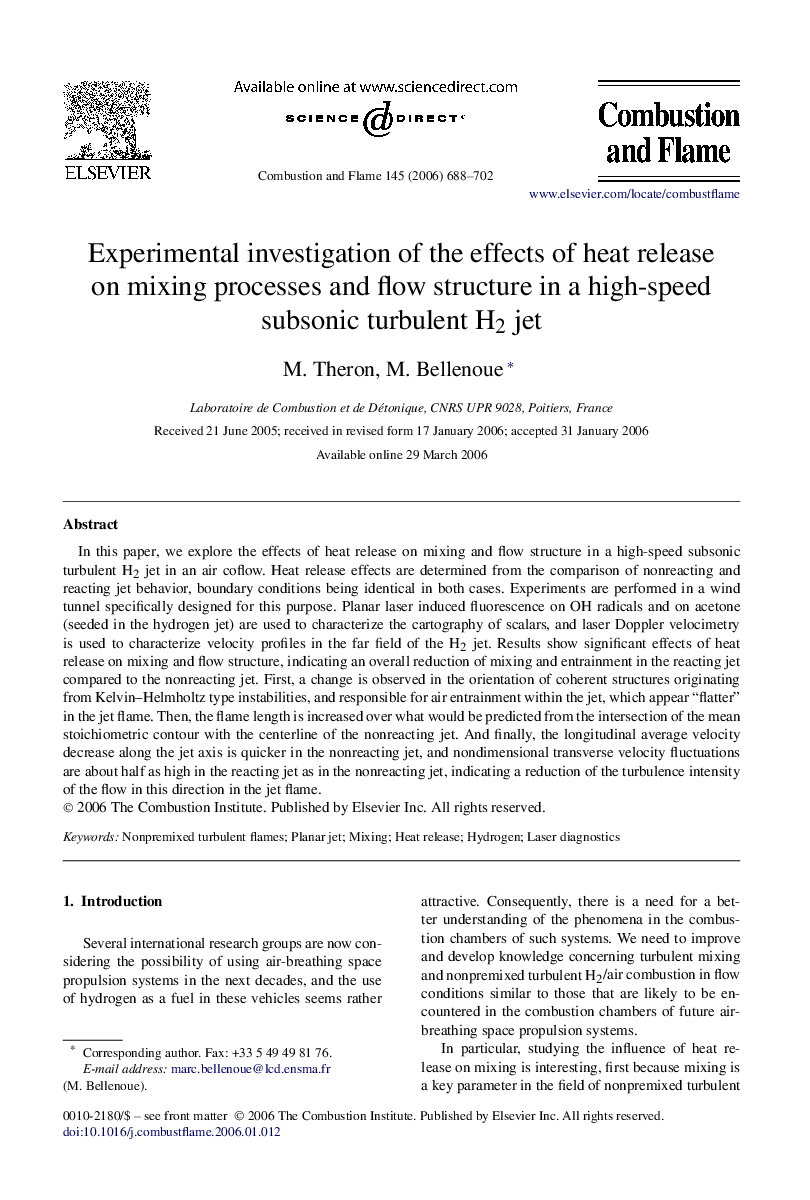| Article ID | Journal | Published Year | Pages | File Type |
|---|---|---|---|---|
| 170136 | Combustion and Flame | 2006 | 15 Pages |
In this paper, we explore the effects of heat release on mixing and flow structure in a high-speed subsonic turbulent H2 jet in an air coflow. Heat release effects are determined from the comparison of nonreacting and reacting jet behavior, boundary conditions being identical in both cases. Experiments are performed in a wind tunnel specifically designed for this purpose. Planar laser induced fluorescence on OH radicals and on acetone (seeded in the hydrogen jet) are used to characterize the cartography of scalars, and laser Doppler velocimetry is used to characterize velocity profiles in the far field of the H2 jet. Results show significant effects of heat release on mixing and flow structure, indicating an overall reduction of mixing and entrainment in the reacting jet compared to the nonreacting jet. First, a change is observed in the orientation of coherent structures originating from Kelvin–Helmholtz type instabilities, and responsible for air entrainment within the jet, which appear “flatter” in the jet flame. Then, the flame length is increased over what would be predicted from the intersection of the mean stoichiometric contour with the centerline of the nonreacting jet. And finally, the longitudinal average velocity decrease along the jet axis is quicker in the nonreacting jet, and nondimensional transverse velocity fluctuations are about half as high in the reacting jet as in the nonreacting jet, indicating a reduction of the turbulence intensity of the flow in this direction in the jet flame.
